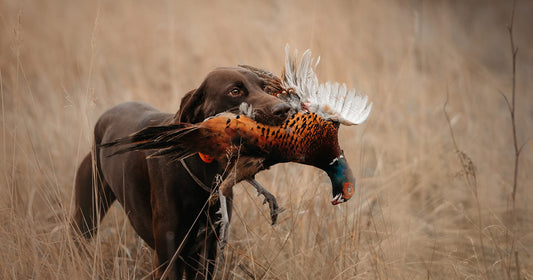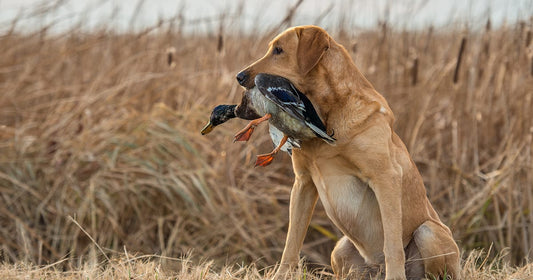Bringing home a new puppy is an exciting moment, especially when that puppy is destined to be a pointing dog. Whether you’re dreaming of crisp autumn hunts or simply enjoying the companionship of a loyal bird dog, proper training is key to unlocking your puppy’s full potential.
These ten tips should help you navigate the early stages and long-term journey of training your pointing dog:
- Know Your Dog’s Personality: Every dog is unique, some are bold and fearless, while others may be more reserved. Understanding your dog’s temperament will help you tailor your training approach for the best results, because what might work for one dog, may not work for another.
- Expect Ups and Downs: Dogs are not machines, one day they’ll nail a command and the next, they might forget it entirely. This is normal.
- Practice Patience, Persistence and Consistency: These three golden words are the backbone of successful training. Be calm and encouraging, but also firm and consistent. Your dog will thrive in a stable, trusting environment.
- Start in the Yard, Not the Field: Early obedience training should happen at home or in a controlled setting. The field should be a place of positive experiences early on, not correction.
- Praise Over Punishment: Especially in the puppy stage, positive reinforcement goes a long way. Celebrate small wins and build confidence.
- Master the “Whoa” Command: This is the most critical command for pointing dogs. It’s used to teach steady pointing, honoring and even safety. Begin training “whoa” around six months of age and reinforce it consistently.
- Let Them Chase, But Not Catch: In a puppy’s first year, don’t worry too much if they chase birds. It’s part of the learning process, just make sure they’re not catching them, wild birds usually prevent this naturally.
- Don’t Rush the Process: Professional trainers often prefer a dog with no early training over one that’s been pressured too soon. A fully finished bird dog typically takes about three years so let natural abilities develop at their own pace.
- Use E-Collars Responsibly: E-collars should only be used to correct non-compliance with commands your dog already understands, never use them to teach new commands.
- Know When to Step Back: The most important thing in hunting dog training is what you don’t do. Trust your dog’s instincts and avoid overtraining, if you’ve chosen a puppy from strong hunting lines, their natural abilities will shine through with time and gentle guidance.
Training a pointing dog is a rewarding journey built on trust, patience and mutual respect. Following these guidelines, you’ll not only shape a skilled hunting companion but also deepen the bond between you and your dog. And remember—great nutrition fuels great performance. Native performance dog food is crafted to support your dog’s health and energy through every stage of training and adventure.




